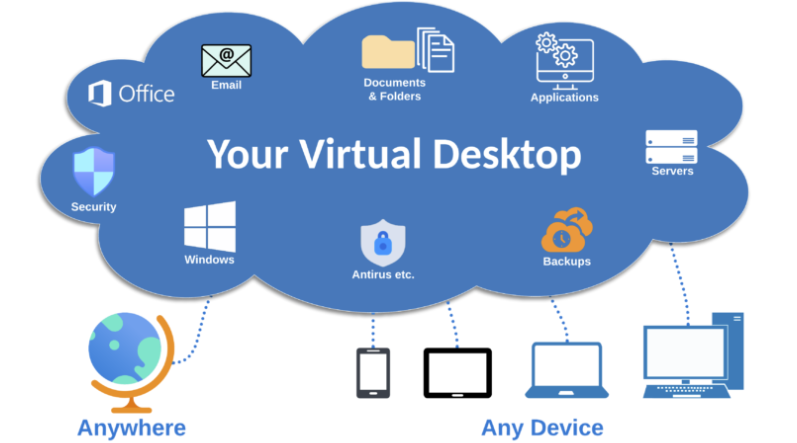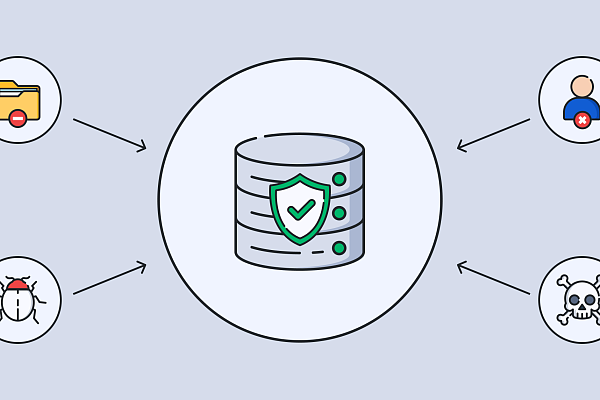The shift toward remote work is accelerating. According to Acumen Research and Consulting, the global VDI (Virtual Desktop Infrastructure) market is projected to grow by over 20% by 2030, proving its critical role in modern business.
VDI empowers employees to work from anywhere while helping companies cut costs on hardware and IT maintenance. It is a win-win — especially for industries with remote teams, hybrid workforces, or employees constantly on the move.
In this guide, we’ll break down:
-
What VDI is and how it works.
-
Key benefits for security and productivity.
-
Which businesses benefit most from virtualization.
What Is Virtual Desktop Infrastructure (VDI)?
VDI is a cloud-based desktop solution where the operating system, apps, and data are hosted on a central server instead of a local computer. Employees simply log in from their device —laptop, tablet, or even an old PC — to access their virtual workspace.
There are two deployment options:
-
On-Premises VDI – Hosted on your company’s own servers (ideal for strict compliance needs).
-
Cloud VDI – Managed by a third-party provider, offering scalability, lower upfront costs, and automatic updates.
How does VDI work?

VDI delivers secure, high-performance remote desktops with a consistent experience across devices. Here’s the breakdown:
-
Centralized Virtual Machines (VMs) – Each employee’s desktop runs on a virtual machine in a data center, independent of their physical device.
-
Secure Remote Access – Users connect via the internet using a thin client (a lightweight app or device). Even outdated hardware works smoothly.
-
Hypervisor Management – A hypervisor manages all VMs, optimizing resources and ensuring fast performance.
This setup means IT teams control everything remotely, from security patches to software updates — no more manual fixes on individual PCs.
The role of VDI in remote work
1. Unmatched Security.
With cyber threats on the rise, Virtual Desktop Infrastructure provides enterprise-grade protection:
-
Data Never Leaves the Server – Sensitive files stay in the data center, protected by firewalls, encryption, and intrusion detection.
-
Strict Access Controls – Multi-factor authentication (MFA) ensures only authorized users can log in.
-
Containment of Threats – If malware infects a device, it doesn’t spread, because the virtual desktop remains isolated.
2. Centralized IT Management
-
Fix issues instantly – IT teams can troubleshoot, update, or patch all virtual desktops at once from a single dashboard.
-
No more on-site visits – Perfect for companies with multiple branches or remote employees.
3. Consistent User Experience
-
Every employee gets the same apps, settings, and security policies, eliminating compatibility issues.
-
No more "it works on my machine" — updates roll out uniformly.
Who Needs VDI? 5 Key Use Cases
VDI isn’t just for big corporations—it’s a smart solution for any business with:
Globally Distributed Teams
Example: A U.S.-based company with employees in Europe and traveling sales reps. VDI lets them work seamlessly from anywhere.
High-Performance Software Needs
Example: Design firms using AutoCAD or Adobe Photoshop can avoid expensive workstations by running apps in the cloud.
Multiple Office Locations
Example: A logistics company with hundreds of branches can manage all IT centrally—no need for local tech support.
Strict Data Security Requirements
Example: Banks, healthcare, and government agencies use VDI to prevent data leaks and meet compliance standards.
Seasonal or Temporary Workers
Example: Call centers scaling up for holiday sales can quickly deploy (and remove) virtual desktops as needed.
Is VDI Right for Your Business?
If your company relies on remote work, security, or IT efficiency, VDI is worth considering. It reduces hardware costs, strengthens cybersecurity, and simplifies IT management—all while giving employees flexibility without compromise.




